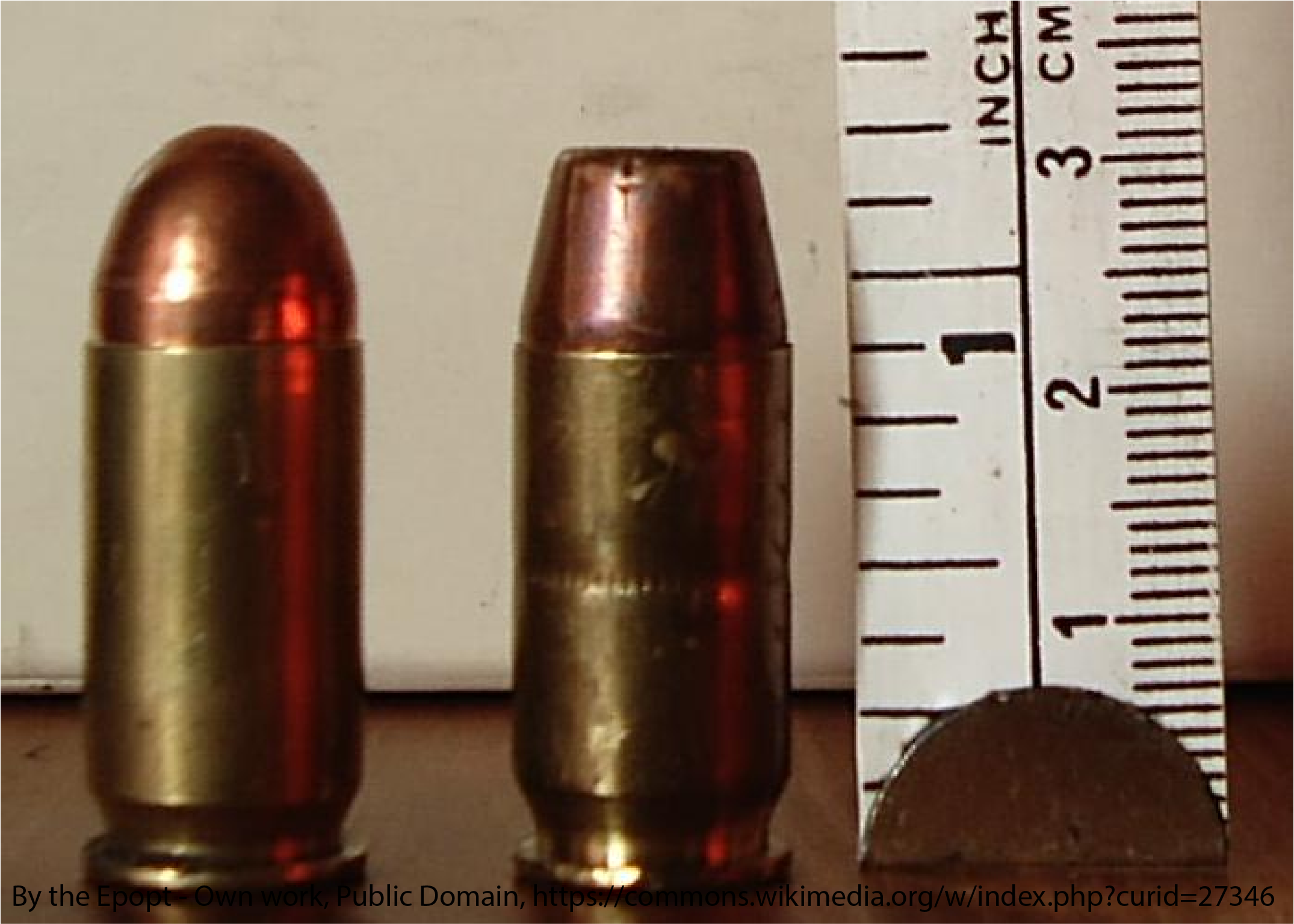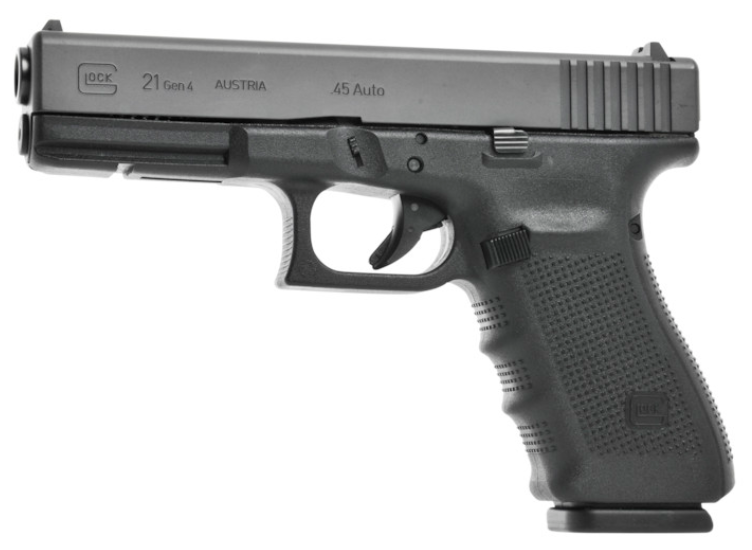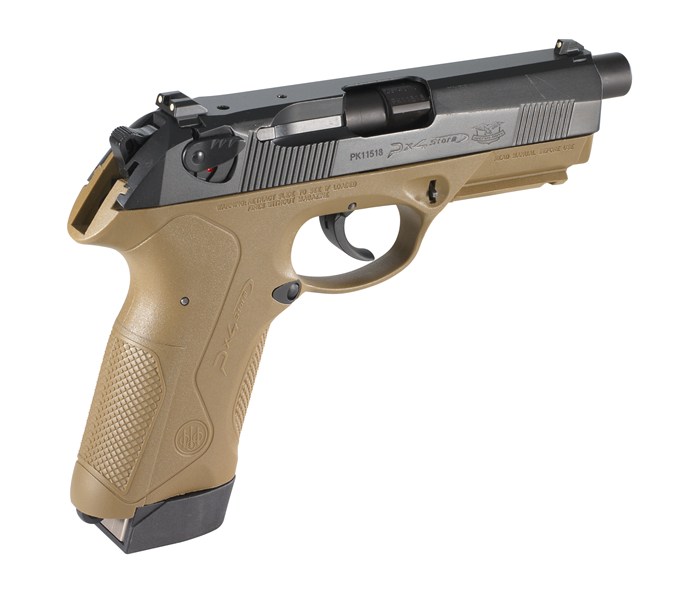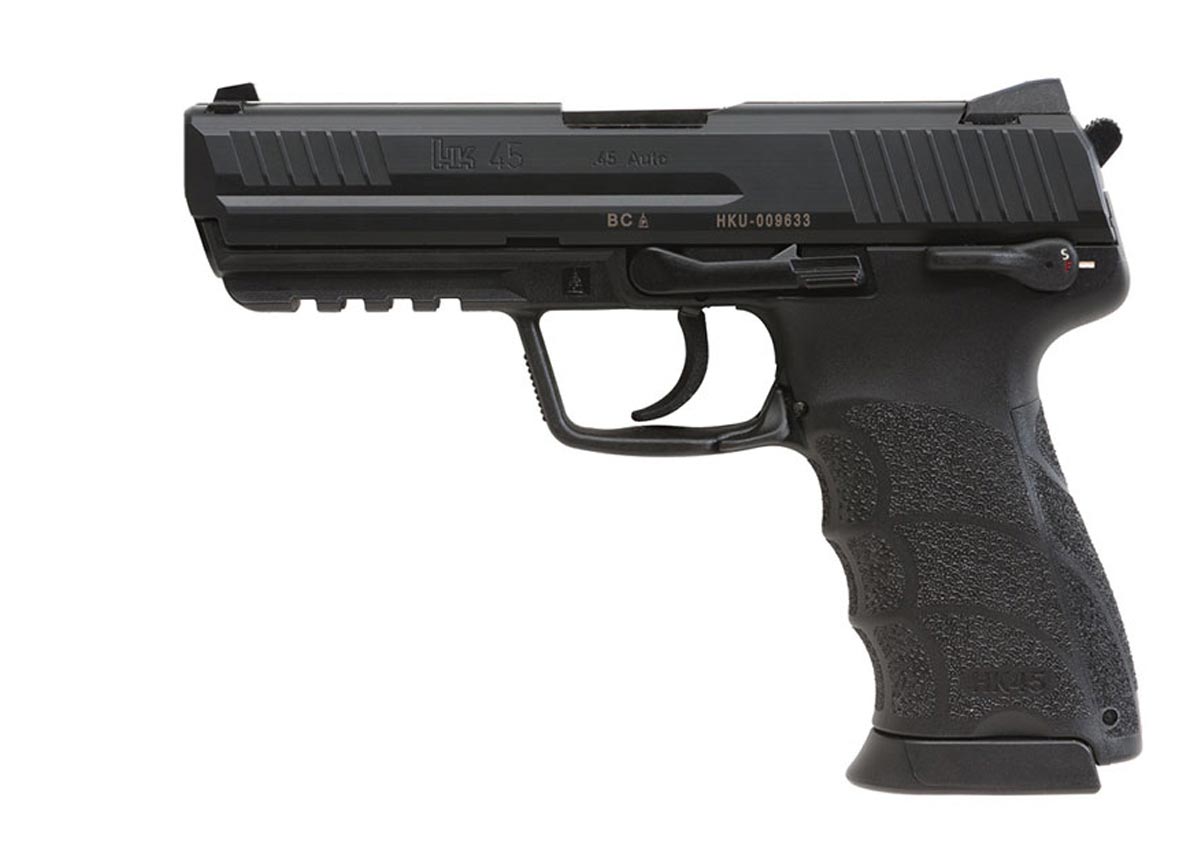The 9mm has its short and long, as does the 10mm, so why not the 11mm? What are we, the red-headed stepchild?

The 11 mm does, indeed, have a short and long. The short is the ever-popular .45 ACP. The long is the not-so-popular .45 Super, the .45 Winchester Magnum, and the .460 Rowland. The .45 Colt cannot be considered as a .45 ‘long’ simply because it is a revolver cartridge. The closest thing to a .45 ‘long’ might be the .45 Winchester Magnum, as it is a true pistol cartridge that can push a 230-grain bullet into .44 magnum territory. It also requires a honkin’ large pistol to get it there.
Nope, we just need a .45 Long, a more powerful 11mm semi-automatic pistol cartridge.
Simply making the .45 ACP cartridge +P does not make it special. It simply means that you spend some money to beef up the recoil spring to prevent the round from battering the frame of your favorite 1911 pistol. Simply taking a Hornady .45 ACP+P XTP JHP 230 Grain bullet and pushing it to 950 feet per second instead of 830 feet per second simply does not cut it. We need something to push that weight of projectile to .357 magnum ballistics, or at least something that will make the 10mm seem like a pussycat.
The .45 Super simply beefs up the .45 ACP case to handle a higher pressure. “Born of a desire to update and improve the 1906 era .45 ACP, the .45 Super cartridge is dimensionally identical with the older .45 ACP round. A notable difference is that it has a thicker case wall than its ACP brethren cartridge, and the Super is loaded to higher pressures, which makes it a substantially more powerful round than the standard .45 ACP. It offers an average 300 foot per second (ft/s) improvement in muzzle velocity. The cartridge was co-developed by Tom Fergerson and Ace Hindman.” – Source: http://www.45super.com/
But, with the increased pressure concerns also bring other concerns. The first, the beefing up of the recoil spring in a 1911 style pistols has been mentioned. There is also the question of properly supporting the cartridge so that case ruptures do not occur, or at least, can be prevented. Support for the case head must be addressed by adopting a new chamber and barrel design, which better supports the base area of the case. Other areas of the model 1911 pistol design must also be strengthened, including a strengthened firing pin redesign to prevent primer material from flowing into the firing pin channel under high chamber pressures. Of course, we are talking about the 1911 pistol. There has been no mention of other pistols, such as a polymer pistol design to handle the cartridge. Indeed, if the .45 Super cartridge could be properly introduced to the masses, and accepted by them as a viable cartridge, future pistol designs could be in order.

In fact, if you have a Glock G21, like that above, you can convert it to shoot the .45 Super at minimal cost. Click here to read an article on how to do just that. And, if you need a guide for ammunition, Ballistics By the Inch can provide that. Click here for more .45 Super cartridge ballistic information. It should be noted here (and I’ll note it elsewhere, that a firearm chambered for the .460 Rowland (to be discussed) can also fire the .45 Super.
A standard Glock G36 with a 3.77″ barrel, when firing the Buffalo Bore 230 grain JHP, can garner 1,053 fps at the muzzle, according to BBTI (Ballistics By The Inch). But, aargh! We want something more! A Glock G21 with a 4.61″ barrel, shooting the Buffalo Bore 230 grain JHP, can garner 1,094 fps at the muzzle. But, aargh! We still want something more! And, I would rather chew on my left big toe than try to hold onto the G36 when firing this round.
The following are excerpts taken from https://military.wikia.org/wiki/.460_Rowland.
“The .460 Rowland is a proprietary cartridge which attains true .44 Magnum level velocities when fired from a number of popular semi-automatic pistols, revolvers, and rifles. The cartridge was designed and developed by Mr. Johnny Ray Rowland, host of “The Shooting Show.” After first developing the new cartridge, Mr. Rowland worked with Starline Brass to finalize commercial production of the brass and later with Clark Custom Guns to develop the first commercially available .460 Rowland Conversions for specific versions of the M1911. First production shipments of ammunition and conversions were made through these associations in 1998.
The .460 Rowland case is approximately 1/16″ longer than a conventional .45 ACP case but the overall cartridge length is the same, the bullet is simply seated deeper. The purpose of the extended case length is to prevent the high pressure .460 Rowland from being chambered in a standard firearm chambered for the low pressure .45 ACP. This is like the relationship between the .357 Magnum and the .38 Special.
There are two key elements to the .460 Rowland concept. The first is a sharp increase in cartridge maximum pressure over the .45 ACP and .45 Super. Maximum Average Pressure is: 45 ACP (21,000 PSI), .45 ACP +P (23,000 PSI), .45 Super (28,000 PSI), .460 Rowland (40,000 PSI). The second is to damp or reduce the velocity of the slide in converted autoloading pistols to manageable levels. The first delivers magnum level performance and the second allows the cartridge to be easily and reliably fired from compact, lightweight, high capacity, autoloading pistols.”
The .460 Rowland Cor Bon Hunter 230 grain JHP, when fired from a Wilson Combat Hunter with a 5.5′ barrel, will produce 1213 fps at the muzzle, according to BBTI. Now, we are getting somewhere. Incidentally, the bullet diameter for the .460 Rowland is not .460; it is .451 and is the same diameter as the .45 ACP.
So, let’s briefly talk about the .45 Winchester magnum, a cartridge that I am more than familiar with. Just to give you an idea of the cartridge, the following is some cartridge data:
| CARTRIDGE | VELOCITY | ENERGY |
| 230 gr (15 g) JHP Underwood: | 1,600 ft/s (490 m/s) | 1,307 ft⋅lbf (1,772 J) |
| 255 gr (17 g) HC FN Buffalo Bore: | 1,400 ft/s (430 m/s) | 1,110 ft⋅lbf (1,500 J) |
| 260 gr (17 g) Power-Point Winchester: | 1,200 ft/s (370 m/s) | 831 ft⋅lbf (1,127 J) |
The .45 Winchester Magnum HAS NO PARENT CASE. “The case is redrawn with thicker walls and longer case. The thicker wall dimensions of the .45 Winchester Magnum are designed to accommodate a higher internal pressure (40,000 cup) than that of the .45 ACP (18,000 cup [21,000psi or 140MPa]).” – Source: https://en.wikipedia.org/wiki/.45_Winchester_Magnum

(Picture By: Vercing at English Wikipedia – Transferred from en.wikipedia to Commons by ArikamaI., Public Domain, https://commons.wikimedia.org/w/index.php?curid=13035313)
The .45 Winchester Magnum cartridge was designed by Winchester in 1977 and was produced in 1999. While I did not have a Wildey pistol, I did have the L.A.R. Grizzly Win Mag like that above. The L.A.R. Grizzly Win Mag weighed 53 ounces (3 pounds 5 ounces) loaded. My version had a 6.5-inch barrel.
Due to the size and weight of the pistol, the .45 Winchester Magnum round was pleasurable to shoot. The recoil was no more or less than a comparable .44 Magnum revolver. For hunting and silhouette shooting, it was an excellent cartridge. For personal defense use against two-legged critters, it did suffer from over-penetration. Just to give you an idea of the power of this cartridge, the standard recoil spring used in the Mark I and II Grizzly Win Mag pistols chambered for the .45 Winchester Magnum has a 27-pound rating, as compared to the standard 16-pound rating for a standard 1911 pistol chambered for 45 ACP. A 1911 firing +P ammunition might require a recoil spring upgrade to 20 pounds. I normally run an 18-pound recoil spring in my EDC.
While I may have hit on a few possibilities for a .45 Super Duper (the technical term for the Superior Defense round), it is not quite there yet. The .45 Winchester Magnum is too extreme; whereas, the .45 Super is not extreme enough. The .460 Rowland is close, but what is needed is enough cartridge to warrant a longer case length so that a new pistol can be entirely built around that cartridge; moreover, both the cartridge and the pistol must be affordable to most. What we are looking for is a pistol that can be as popular as those already in the marketplace for counter-offensive work against bad people who are intent to use their puny pistols in a harmful manner.
For us .45 ACP fanatics, that means the 230-grain cartridge is taken to around 1,200 feet per second, which is below .45 Winchester Magnum levels and would put it in the 158-grain, .357 Magnum range. As another comparison, the 10mm Buffalo Bore 180 grain JHC out of a 5″ barrel is 1399 feet per second. So, a 230-grain cartridge taken to around 1,200 feet per second is within the realm of possibility.

What about the pistol to fire this round? As a 1911 buff it is easy for me to suggest the 1911 platform, and it would make an excellent platform. But, how about a Beretta Px4 Storm SD Type F, like that shown above? A description of the pistol could read; “The PX4 Storm SD features a rotating barrel system. This means that under recoil, the barrel rotates, thereby dissipating momentum radially, which translates in much lower felt recoil and muzzle jump, even with hotter .45 SD (Superior Defense) rounds. Furthermore, the extended cold-hammer forged barrel is 4.5” long and allows the power of the .45 SD to fully develop before exiting the muzzle.”

Of course, there is already mention of the G21 being converted to a .45 Super, so why not carry that further for the .45 SD cartridge. Springfield Armory could also do the same for their XDm line-up. How about a SD variant for the ever-popular HK45, the HK45SD like that shown above?
Ayup! I think that it is high time for a variant of the .45 ACP, and a .45 ACP SD cartridge just might fit the bill. What do you think?
![]()


2 Responses to What the World Needs is a 45…